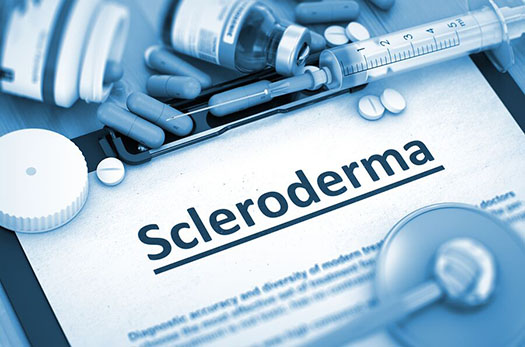If you’ve never heard of scleroderma, you aren’t alone because it is not a common disease. However, for the thousands of Americans that suffer from the autoimmune condition, it significantly affects their lives. While most of the cases appear in middle-aged women, there is a growing number of seniors who develop late-onset scleroderma. Since June is Scleroderma Awareness Month, it’s best for everyone to learn what they can and keep an eye out for symptoms.

Here are 5 significant facts about late-onset scleroderma that family caregivers and home care providers really need to know:
-
Scleroderma is an autoimmune disorder that causes the body to attack itself.
The senior adult’s immune system launches an attack on the joints and connective tissues in the body. The condition is rheumatic and results in painful symptoms and a diminished ability for a senior to easily take care of themselves.
-
Those with scleroderma suffer discomfort and pain from symptoms.
The symptoms of scleroderma include inflammation of the joints and pain or numbness in the fingers and toes. Shiny, tight patches of skin are also common in seniors with scleroderma. Many people also suffer from digestive issues such as acid reflux and also the hardening of tissues around organs like the heart and lungs. Family caregivers and home care providers should always be on the lookout for visible symptoms.
-
The cause of scleroderma is unknown and there is no cure.
Medical experts don’t know what causes it nor is there anything they can do but use medicines to treat the symptoms somewhat effectively. Most cases occur in women between ages 30 and 50, although late-onset scleroderma is increasing. Scleroderma is not contagious or cancerous and it is not infectious, so family members and home care providers cannot develop the disorder simply by assisting an elderly adult.
-
Many of the symptoms of scleroderma can be eased with medication.
Medication can help seniors be more comfortable with the symptoms, but the fact is that many can no longer do certain tasks on their own. Scleroderma can range from mild to severe, so it’s up to family caregivers and home care providers to seek out a doctor that specializes in the condition and get the elderly adult some treatment help as soon as possible.
-
Seniors will likely need a home care provider after a diagnosis of scleroderma.
Family caregivers can help seniors cope with the disorder better by hiring a home care provider. As the stiffness and pain interfere with certain daily functions like bathing, dressing, cooking, housekeeping, and driving, seniors can rely on a professional home care provider. Seniors may become more dismayed emotionally as the disease takes its toll, so a home care provider should be on hand for companionship and to assist as needed.
Family caregivers can do a lot to help their aging relative find support and help after being diagnosed with scleroderma. Whether it’s finding a support group or educating themselves on the latest treatment, seniors will surely benefit from Scleroderma Awareness Week.
If you or an aging loved-one are considering hiring Home Care in Santa Monica, CA, please call Mom's Home Care and talk to our friendly, knowledgeable staff.
Our number is 323-244-4789.













